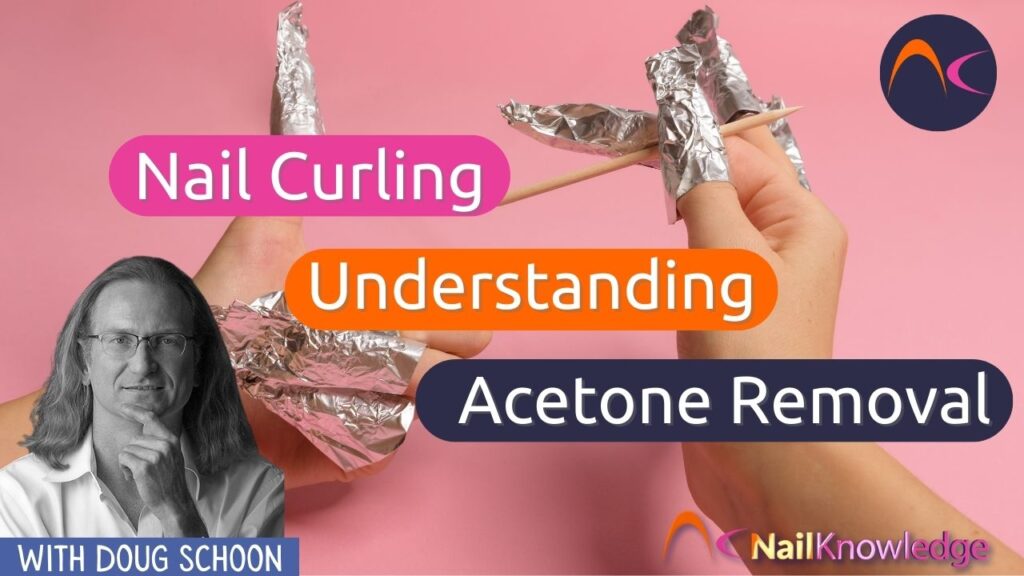As a nail technician, you strive to provide your clients with the best possible experience and results. However, encountering unexpected issues like nail curling after using acetone for removal can be frustrating for both you and your clients.
In this blog post, we’ll cover the reasons behind nail curling during acetone removal and explore effective strategies to prevent this from happening. Whether you’re a seasoned nail professional or just starting out, understanding the science behind nail reactions to acetone and implementing preventive measures can elevate your service quality and client satisfaction.
Understanding Acetone Removal and Nail Curling
The Impact of Nail Plate Thickness and Water Content
I would guess that the nail plates which are curling are thinner than the other nails. The acetone will absorb some water which will lower the water content of the nail plate. The nail plate normally contains about 15% water. Even when you lower the water content even by just a few percent, it can make a big difference, especially for thin nail plates.
Unlocking the Science: Nail Plate Structure and Moisture Dynamics
Much of the water inside the nail plate is located between the layers of nail cells. The science is a bit unclear about how many layers make up a “typical” normal nail plate, but the latest research suggests that about 50 layers of nail cells is a good estimate.
Whenever the water (aka moisture) leaves the nail plate, these layers will draw closer together. This can slightly alter the shape of any nail plate, to varying degrees. Thinner nail plates are much more likely to curl when they lose a little water.
Preventing Nail Curling: Effective Strategies for Nail Plate Health and Strength
The first thing I would try is to regularly perform hot oil manicures, once or twice per month and daily use of a high quality, penetrating nail oil. Doing so will increase the oil content of the nail plate, making it more difficult for water to leave the nail plate’s layers, and therefore slow down or prevent thinner nails from curling.
Also, avoid filing the nails even thinner than they already are. This is one of the biggest mistakes nail technicians make, over filing the top surface of the nail plate. This out-of-date technique is still taught by many nail schools and training courses. Respect the nail plate. The less this upper surface is filed, the better. It’s better to keep the nail plates thick and strong!


